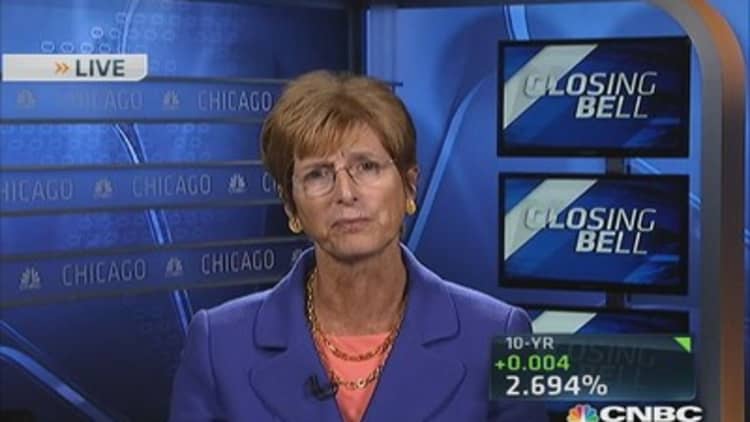The U.S. Department of Energy wants the public to know that its $30 billion program to support alternative energy projects is alive and well—and there's more than just solar and wind power in the mix.
Think nuclear power.
In an interview with CNBC, U.S. Energy Secretary Ernest Moniz declared the contentious green technology loan program "open for business." As memories of the 2011 political scandal around solar panel maker Solyndra fade, Moniz touted a portfolio of more than 30 projects that he said are creating a blueprint for successful renewable energy funding.
Although the program is most closely associated with high-profile implosions of Solyndra and Fisker Automotive, notable alumni include Tesla Motors, which famously repaid its loan well ahead of schedule.
"It has been an extremely successful program," Moniz told CNBC on Tuesday on the sidelines of the Bloomberg New Energy Finance conference in New York. "Obviously we've had high-profile defaults," he said, but the program's overall track record remains "quite good."

Since arriving at the DoE last May, Moniz has championed the provision of taxpayer support for alternative energy projects, while simultaneously backing other fuel sources—most notably natural gas.
As part of Moniz' oft-repeated "all of the above" strategy, the DoE's loan program recently provided $6.5 billion in assistance to two nuclear power plants being constructed by Westinghouse. The Georgia-based reactors are the first federally licensed facilities to break ground in the U.S. in more than three decades.
Read MoreChristine Todd Whitman making a case for nuclear power
Even as nuclear power is forecast to come into greater use in the coming years, the domestic industry has languished amid concerns about environmental safety and the high cost of building new plants.
Although burdened by numerous concerns, backers point out that atomic power is a completely carbon-free energy source that makes it ideal for electric power generation and a useful weapon in the fight against climate change.
Read MoreThe real front in US-Russia 'Cold War'? Nuclear power
"To me, it's about the carbon," Moniz said, "I see a lot of people who have altered their view on nuclear power because of the climate argument."
Additionally, new small modular reactors (SMRs) have technical features that make them "quite different" than their predecessors, Moniz said. "We remain very committed toward moving SMRs as a potentially interesting next generation of reactions," he added.
LNG export green light 'moving along'
Russia's seizure of Crimea has prompted some to call for increased U.S. liquid natural gas exports as a way to counter Western Europe's dependence on Russia for the fuel.
Read MoreThink US nat gas can threaten Russia? Think again
Though it's unlikely that U.S. exports could be ramped up any time soon, Cheniere Energy last week signed an agreement with Spain's Endesa to sell 1.5 million tons of LNG from Cheniere's export facility in Corpus Christi, Texas.
The DoE has granted conditional approval to seven LNG export facilities, but members of Congress are pushing for faster approvals for the more than 20 facilities. On Wednesday, the House's subcommittee on energy and commerce approved a bill to grant fast track status to LNG terminals.
Moniz said the process "has been systematically moving along" with the Energy Department duly "exercising our statutory obligations."
Geopolitics "are one factor, but the impact on the domestic market is another," when it comes to considering LNG exports, Moniz said. He hinted that the government is trying to strike the right balance between the U.S. energy needs and global demand.
—By CNBC's Javier David.


